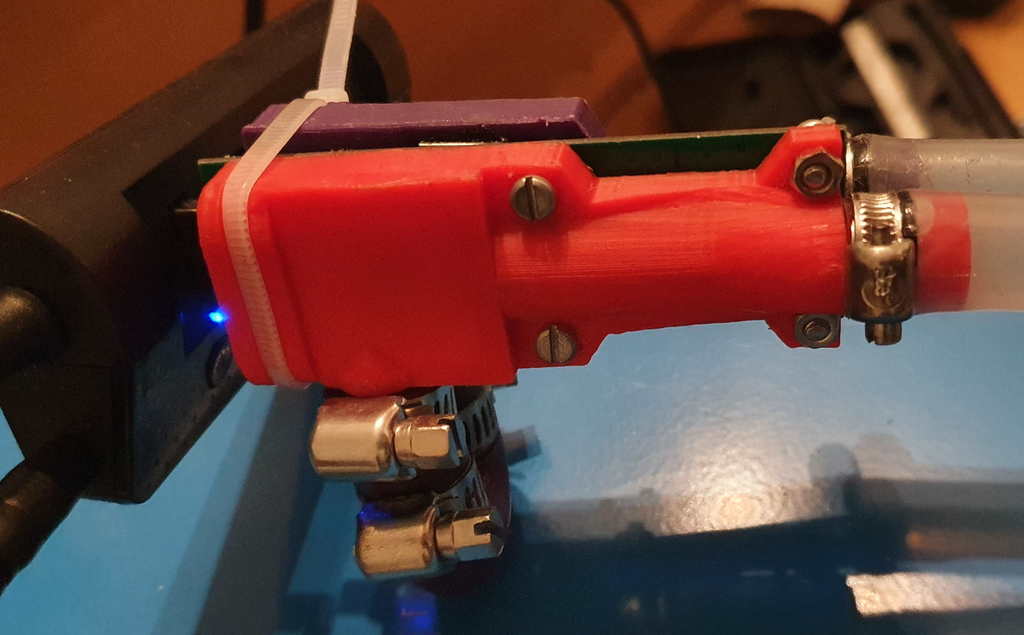
geekoscience Newpac Watercooling
thingiverse
Fr and English trad after ; fichiers stl avec des entrées et sorties d'eau plus longues que sur les photos / stl file with water input/output longer than the one in pictures. Watercooling pour clé usb gekko science newpac. Le but est de monter jusqu'au max de vitesse de 900MHz. Je n'ai pas trouvé la méthode pour monter à cette fréquence. Peut être quelqu'un pourra m'orienter. Autant je peux faire des choses jusqu'à réussir comme pour ce watercooling autant je peux vite lâcher l'affaire quand il s'agit de chercher une info sur le net... Le fichier test sert à vérifier si vos impressions et le collage au sillicone sont bien étanches. C'est aussi la première version du watercooling. Si vous n'en voulez qu'un simple pour l'utiliser à 400/500MHz, il fonctionne très bien. Coté processeurs, la seconde plaque est là car j'ai remarqué que ça chauffait à cet endroit. Coté arrière, j'ai mis des refroidissements sur les composants que j'ai senti le plus chauffer. J'ai utilisé des petites plaques d'aluminium, toutes de la même épaisseur. Prendre minimum 1,5mm d'épaisseur. coupez et limez les de manières à ce qu'elles rentrent avec le moins de jeu possible, quitte à ce que ça frotte. J'ai utilisé du silicone pour faire l'étanchéité, mettre sur les bords intérieurs puis enfoncez la plaque d'aluminium. Pour tuyaux diamètre intérieur 10/11mm En: Watercooling for gekko science newpac usb key. The goal is reaching the maximum speed of 900MHz. I haven't found how to set up the newpac. Maybe someone can guide me. As much as I can do things until I succeed as for this watercooling as I can quickly give up the case when it comes to looking for information on the net... The "watercooling_test" file is used to check if your prints and the sillicone paste are watertight. It's also the first model i made and it work perfectly if you don't want more thzn 400/500MHz. On the processor side, the second plate is there because I noticed that it was heating up there.On the back side, I put cooling on the components that I felt the hottest. I used small aluminum plates, all of same thickness. Take a minimum of 1.5mm thick. cut and file them so that they fit in with the most little clearance as possible. I used silicone to seal it, put it on the inner edges then press down the aluminum plate. for 10/11mm pipe diameter ethereum: 0x1511d6242fb2ebdc8fd7a9794467464e99c1687d litecoin: ltc1qfkat4q9mnflyv395zv57f8k6fm7kw3p0a4q3lz
With this file you will be able to print geekoscience Newpac Watercooling with your 3D printer. Click on the button and save the file on your computer to work, edit or customize your design. You can also find more 3D designs for printers on geekoscience Newpac Watercooling.
